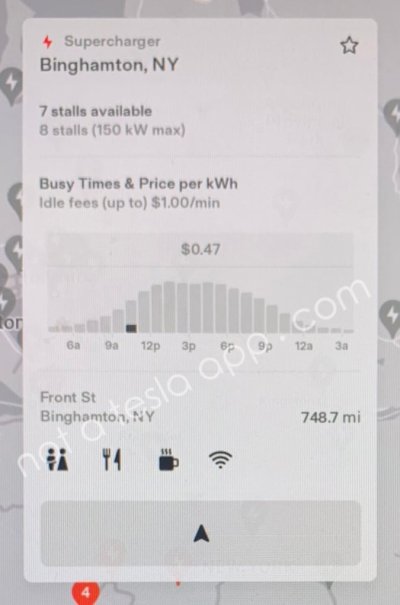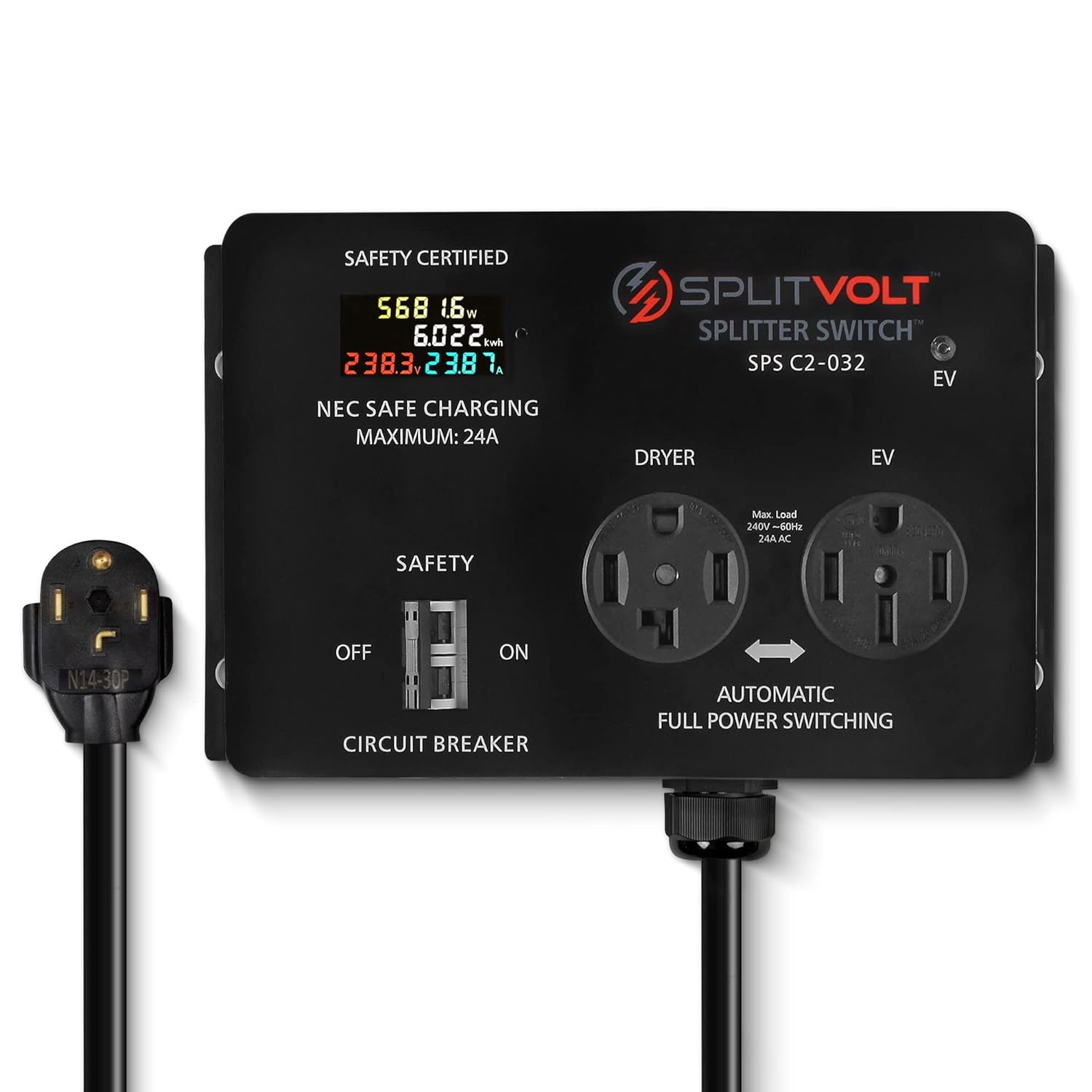For most people that charge at home regularly and only charge at public stations on occasional road trips, I suspect location convenience would trump price-hunting...
Tesla opened up the connector awhile back and made it an open standard that anyone can use. Although this move may have some not-so-obvious benefits for Tesla, there are many obvious benefits for other manufacturers and their customers. Others can now use the connector in their own charging network as well. This is a generous move by Tesla and I don't see why anyone would spin it negatively.
In a Tesla, you see live charger availability and pricing, along with max power, tiered pricing, historical business, any outages, and amenities. Below is what an older version of the Supercharger Pop-up looks like on the car's display. I'm on FSD, so I'm always on an older version of the FW base. My dad is not on FSD so has more up-to-date FW base and he tells me he sees photos of the Supercharger site in his car.


